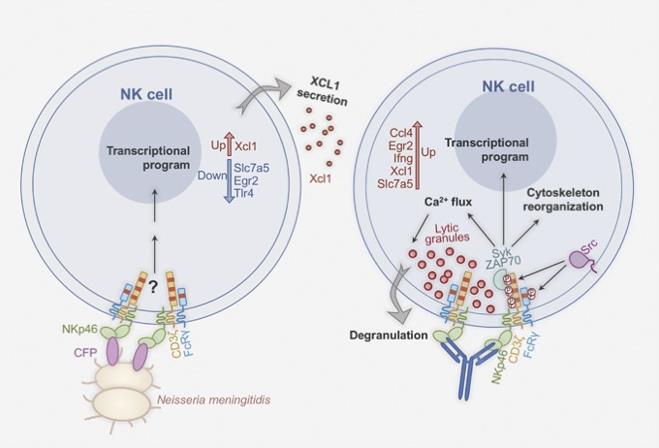What is CFP Protein
Complement Factor P (CFP), also known as properdin, stands as a crucial component within the complex web of the immune system. Its official full name, properdin, aptly describes its role in promoting the proper function of the complement system. Synonyms include the elegant moniker "Factor P" and the more technical alias "complement factor properdin." As part of the larger properdin family, CFP plays a pivotal role in immune response modulation. Recent research advances have shed light on its structural characteristics and classification, catapulting our understanding of its intricate functions.
CFP belongs to the properdin family, a group of proteins distinguished by their ability to enhance the activity of the complement system. Structurally, it is characterized by a unique cyclic trimeric arrangement, which confers stability and functional efficacy. This distinct molecular architecture is crucial for its interactions with other complement components and cellular surfaces. Recent studies utilizing advanced imaging techniques have provided unprecedented insights into the three-dimensional structure of CFP, unlocking new possibilities for therapeutic interventions.
CFP Biological Functions and Molecular Mechanisms
The biological functions of CFP are multifaceted, reflecting its role as a key regulator in the complement system. Primarily, CFP acts as a positive regulator of the alternative pathway by stabilizing the C3 convertase complex, amplifying its activity. This amplification step is crucial for the rapid and efficient clearance of pathogens, contributing to the immune system's ability to mount a robust defense against microbial invaders.
Molecular mechanisms underlying CFP's functions involve its binding to various surfaces, including pathogens and host cells. By enhancing the stability of the alternative pathway C3 convertase, CFP facilitates the opsonization of pathogens, marking them for phagocytosis by immune cells. Additionally, CFP plays a role in modulating inflammatory responses, influencing the delicate balance between immune activation and regulation.

Figure 1. CFP is a self-ligand for NKp46. (Zhuang X, et al., 2017)
CFP Related Signaling Pathway
The complement system operates through a series of tightly regulated signal pathways, and CFP plays a crucial role in the alternative pathway. Upon recognition of pathogens or altered self-cells, CFP stabilizes the C3 convertase complex, initiating a cascade of events that culminate in the elimination of the threat. Dysregulation of this pathway can lead to immune dysfunction, contributing to the pathogenesis of various diseases.
CFP Related Diseases
The dysregulation of CFP has been implicated in various diseases, highlighting its significance in maintaining immune homeostasis. Deficiencies or abnormalities in CFP can lead to an increased susceptibility to infections, particularly those caused by encapsulated bacteria. Autoimmune conditions, characterized by an overactive immune response, may also arise when CFP's regulatory role is compromised. Understanding the intricacies of CFP-related diseases is essential for developing targeted therapeutic strategies to restore immune balance..
CFP's Applications in Biomedicine
Harnessing the unique properties of CFP has paved the way for its applications in biomedical research and development. In the realm of diagnostics, CFP is being explored as a potential biomarker for immune-related disorders. Its presence or absence can provide valuable insights into the status of the complement system and the overall immune response.
In vaccine development, CFP is a promising candidate for enhancing vaccine efficacy. Researchers are investigating its use as an adjuvant, leveraging its ability to potentiate immune responses. This could lead to the development of more robust and effective vaccines against infectious diseases.
On the therapeutic front, CFP is being explored as a target for novel immunomodulatory drugs. Modulating CFP activity could offer new avenues for treating immune-mediated disorders, striking a delicate balance between immune activation and regulation.
| Cat.No. | Product Name | Species | Source (Host) | Tag |
|---|---|---|---|---|
| CFP-002E | Recombinant Cyan Fluorescent Protein, His-tagged | E. coli | E. coli | His |
| CFP-1179H | Recombinant Human CFP Protein, GST-Tagged | Human | Wheat Germ | GST |
| CFP-252H | Recombinant Human CFP, His-tagged | Human | E.coli | His |
| CFP-29037TH | Recombinant Human CFP | Human | Wheat Germ | N/A |
| CFP-7679H | Recombinant Human CFP protein, His & T7-tagged | Human | E.coli | His/T7 |
| CFP-1383H | Recombinant Human CFP Protein (Gln65-Cys190), His tagged | Human | E.coli | His |
| CFP-901H | Recombinant Human CFP protein, His-tagged | Human | HEK293 | His |
| CFP-1352H | Recombinant Human CFP Protein (Gln65-Cys190), N-His tagged | Human | E.coli | N-His |
| CFP-3299HF | Recombinant Full Length Human CFP Protein, GST-tagged | Human | In Vitro Cell Free System | GST |
| Cfp-7680M | Recombinant Mouse Cfp protein, His-tagged | Mouse | E.coli | His |
Reference
- Zhuang X, Long E O. Complement factor P: promoting the antibacterial activity of natural killer cells. Cellular & Molecular Immunology. 2017, 14(10): 797-799.

